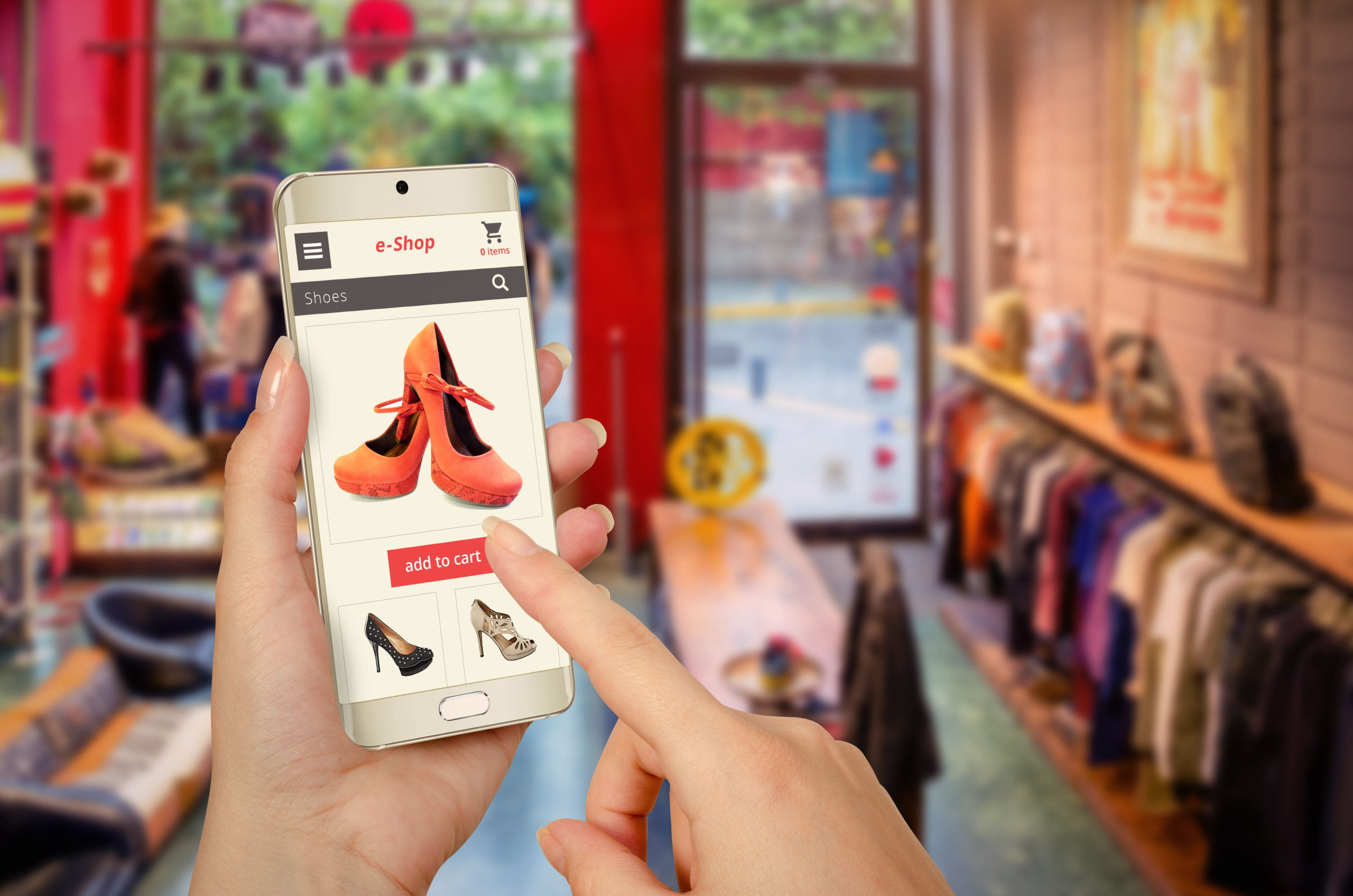eCommerce Buyer Behavior Trends in 2020

Buyer behavior trends are always shifting — can you keep up?
Giving buyers what they want is the lifeblood of your online store. You have to find the products they are looking for, present them in a way that gets their attention, and follow through with their orders in a timely fashion after you’ve gained their trust.
But how do you find out what they want and make sure you’re stocking the items that people are looking for?
You need to understand how to identify buyer behavior trends in online shopping and apply those trends to your own store. Let us show you how to get ahead of the whims of your buyers and grow your store.
6 eCommerce Buyer Behavior Trends to Get Ahead Of
Times are changing, and technology is advancing at a rapid rate. To keep your business ahead of the times, you need to prepare for coming trends that will shape the future market.
Multi-channel shopping, niche marketing, chatbots, AI, and voice search are becoming increasingly more common. Let’s discuss each one and learn how you can implement some of these strategies into your current marketing efforts.
1. Multi-Channel Shopping
What is multi-channel shopping?
Selling your products in multiple places allows your customers to choose where they make their purchase. This is called multi-channel shopping. An example of this would be selling your products in-store, on Amazon, Shopify, and Facebook at the same time.
Why is multi-channel shopping trending in eCommerce?
67% of online consumers say they rely on more than one channel to do their shopping, and the average shopper visits a site 9.5 times before making a purchase. If you are only utilizing one channel to sell your products, you’re missing out on an excellent opportunity to increase your sales. Implementing multi-channel shopping can increase your company’s growth by 9.5% on average.
How can you implement multi-channel shopping?
Take the following steps to get started with multi-channel shopping now.
Step One – Understand the Journey Your Target Customer Takes
Getting your product in front of your target customer during the “Zero Moment of Truth” is crucial. This is the moment in time that a consumer spends researching a product before they even land on your website.
You need to understand the thought process and steps consumers take during the buying process. This helps you narrow your marketing focus and ensures your products are getting seen by your ideal customers at the time they are planning to buy.
A Typical Buyer’s Journey
- A customer discovers a new product in-store or via online ads.
- They perform a search to compare the product they found with similar options. 82% of shoppers research a product on their phone before making a purchase in-store.
- Once the customer has narrowed down their choice to a few options, they look for social proof in the form of reviews or referrals from friends.
- They choose which product to buy and complete the purchase on their preferred platform.
Step Two – Choose Which Channels to Focus Your Efforts
Doing too much too fast leaves you stretched thin. Narrow your focus to one channel at a time and don’t move on to the next one until the last one is fully operational and optimized.
Start with channels you are already on and then work your way to the others in order of priority. Consider selling your products on Amazon if you aren’t already. 9 out of 10 consumers compare pricing on Amazon, and 95 million people in the US are Prime members.
Step Three – Avoid These Common Mistakes
As mentioned above, doing too much too fast can put you in a bind. There are other common mistakes to watch out for when implementing a multi-channel shopping experience for the first time. You need to consider these when getting started.
- Pick your eCommerce platform carefully. Not all platforms provide a seamless multi-channel experience. Shopify Plus offers an eCommerce solution that integrates with over 20 channels.
- Customize your product pages for the channel they are on. Don’t make the mistake of using the same content for your product pages on every channel. Each one is unique with its own audience and requirements.
- Learn the difference between Multi-Channel and Omni-Channel selling. Omni-channel selling is when you try to sell on every platform possible, and we don’t recommend that. Multi-channel selling is a more effective strategy because you choose to sell on the channels you know your target customers are on.
2. Niche Marketing
What is niche marketing?
Narrowing down your focus to a specific group of people with similar interests, tastes, and pain points is called niche marketing. This allows you to market to fewer people with higher conversion rates if done correctly.
Why is niche marketing trending in eCommerce?
In trying to market a product to everyone, we sometimes reach no one. Making your marketing efforts too broad easily muddles your message and offering too many unrelated products leaves your customers feeling confused.
For example, why would a company selling hair care products also be selling office supplies?
That moment of uncertainty is costly, and the hesitation could stop them from completing their purchase. When you’re able to tailor your message to a specific audience, it’s easier to identify the pain points that will persuade them to buy. The key is to pick your niche and find out everything you can about the people who are in it.
How can you implement niche marketing?
Niche marketing doesn’t mean that you have to tailor your entire store to a single niche, but it can be wise to at least narrow your store around a unified theme. For example, you could cater to animal lovers as a broad niche and have products geared at sections of that like cats or dogs.
Follow these 4 steps to get started with niche marketing.
- Identify your customers’ pain points with a survey or poll. This helps you identify recurring pain points that you can solve with a niche product.
- Check out the competition. Determine what they are doing well and find ways to improve on their ideas.
- Understand your customers’ wants and needs. Interact with them in groups, forums, private chat, phone calls, text messages, or even in person. The more you know about their likes and dislikes, the better. This helps you create more effective ads and marketing campaigns.
- Focus on providing an exceptional customer experience. Once you have earned their trust and they have made a purchase with you, wow them with how streamlined and straightforward the process was. Then deliver a product worth raving about to their friends and family.
You can read more examples of niche marketing on Shopify’s blog.
3. Chatbots and AI Shopping
What is AI Shopping?
Artificial intelligence (AI) has wormed its way into our everyday lives. Chatbots with this technology can assist customers with making purchases, offer product recommendations and discounts, and even allow the user to complete their purchase within the chat window. The more interactions they have with that customer, the more relevant their recommendations get.
Why is AI shopping trending in eCommerce?
According to Gartner, the average person will have more conversations with AI-powered bots than with their partners by 2020. AI helps eCommerce owners optimize searches, manage relationships with their customers and improve targeting, provide 24-7 interaction with their brand through chatbots, create a more personalized shopping experience, and provide them with valuable market insights.
How can you implement AI shopping and chatbots?
Shopify Plus makes it easy to implement AI and chatbots into your online presence in a variety of ways. Check out this article on their website for more information about how you can increase your sales, conversion, and retention with eCommerce chatbots.
4. Voice Search Shopping
What is voice search shopping?
Voice searches are performed when a user voices their search query to a device with speech recognition software. This allows consumers to perform hands-free searches.
Why is voice search trending in eCommerce?
With the increasing popularity of devices like Amazon’s Alexa, Google Home, and mobile devices, more consumers are using voice search compared to text than ever before. 93% of consumers say they are satisfied with their voice assistants, and 43% of voice-enabled device owners make purchases with voice search.
How can you implement voice search?
Search queries will be getting longer, and the use of long-tail keywords will increase. Optimizing your content for these longer searches can help you get ahead of the trend. For more ideas on how to implement and prepare for voice search, read this article from Shopify.
5. More Checkout Options
What are additional checkout options?
80% of retailers offer at least 2 ways of taking payments, and consumers want more options. Not offering the payment methods your users prefer is leaving cash on the table.
Why are more checkout options trending in eCommerce?
Only 8% of retailers offer mobile wallet payments. Beat your competition to the punch and jump on this trend now. 40% of consumers were using this form of payment in 2017, and it’s expected to climb to 56% by 2020.
How can you integrate more checkout options?
Shopify Plus offers several ways for your customers to pay. They include PayPal, Amazon Pay, Apple Pay, Google Pay, and more. Their Shopify Pay feature lets customers check out quickly by storing their shipping and payment information. Read the full list of payment gateways they support on their website.

6. Personalized Shopping Experiences
What is personalized shopping?
Personalizing the experience your customer has with your brand makes the difference between a loyal customer who comes back or someone who makes a one time purchase never to return. You want to communicate your customers’ wants, needs, and pain points, so they feel like you understand them better than they do themselves.
Why is personalized shopping trending in eCommerce?
54% of shoppers expect to receive a discount within 24 hours of interacting with a brand, and 71% of consumers are frustrated by impersonal shopping experiences. You need to engage and interact with your customers. Learn as much as you can about them so you can personalize their shopping experience to meet these demands.
How can you implement personalized shopping?
Automated email campaigns are an excellent way to connect with your customers on a more personal level. Klaviyo is an email service provider that lets you set up a series of emails for new subscribers, abandoned carts, confirmation, and shipping. If you are using Shopify along with Klaviyo, you can create dynamic coupons with a coupon code that is unique for every subscriber on your list.
Recommended Reading: How to Create Shopify Automated Campaigns Using Klaviyo
Consult an eCommerce Expert
Do you want to make sure your business stays relevant in this fast-changing economy? Bringing in an expert can give your eCommerce business a significant advantage over your competitors.
Our experienced staff is here to help you get ahead of the trends and provide your shoppers with the experience they are craving for. Schedule a meeting and let us help!

 Ryan Kodzik
Ryan Kodzik 
